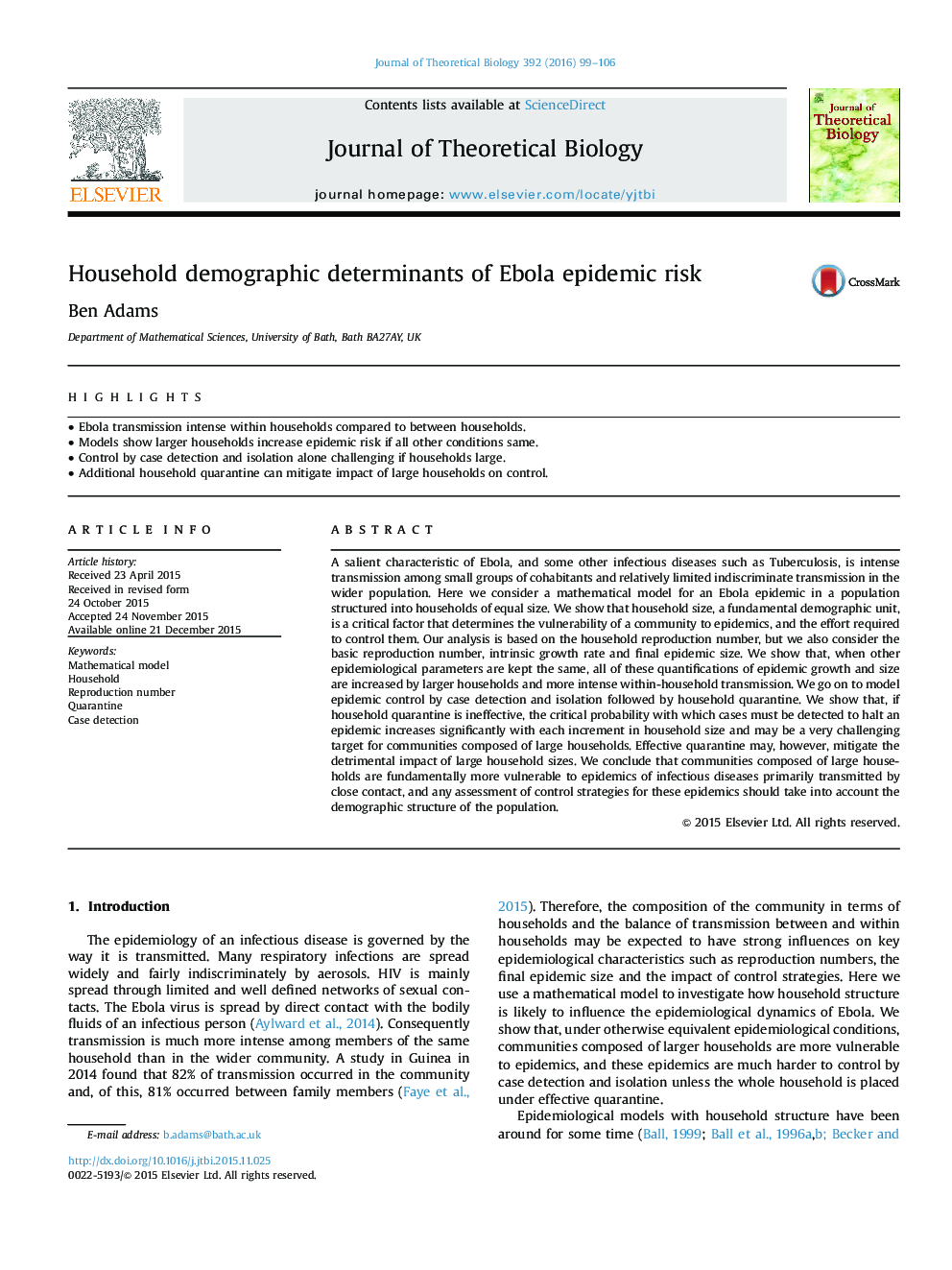| Article ID | Journal | Published Year | Pages | File Type |
|---|---|---|---|---|
| 4495915 | Journal of Theoretical Biology | 2016 | 8 Pages |
•Ebola transmission intense within households compared to between households.•Models show larger households increase epidemic risk if all other conditions same.•Control by case detection and isolation alone challenging if households large.•Additional household quarantine can mitigate impact of large households on control.
A salient characteristic of Ebola, and some other infectious diseases such as Tuberculosis, is intense transmission among small groups of cohabitants and relatively limited indiscriminate transmission in the wider population. Here we consider a mathematical model for an Ebola epidemic in a population structured into households of equal size. We show that household size, a fundamental demographic unit, is a critical factor that determines the vulnerability of a community to epidemics, and the effort required to control them. Our analysis is based on the household reproduction number, but we also consider the basic reproduction number, intrinsic growth rate and final epidemic size. We show that, when other epidemiological parameters are kept the same, all of these quantifications of epidemic growth and size are increased by larger households and more intense within-household transmission. We go on to model epidemic control by case detection and isolation followed by household quarantine. We show that, if household quarantine is ineffective, the critical probability with which cases must be detected to halt an epidemic increases significantly with each increment in household size and may be a very challenging target for communities composed of large households. Effective quarantine may, however, mitigate the detrimental impact of large household sizes. We conclude that communities composed of large households are fundamentally more vulnerable to epidemics of infectious diseases primarily transmitted by close contact, and any assessment of control strategies for these epidemics should take into account the demographic structure of the population.
